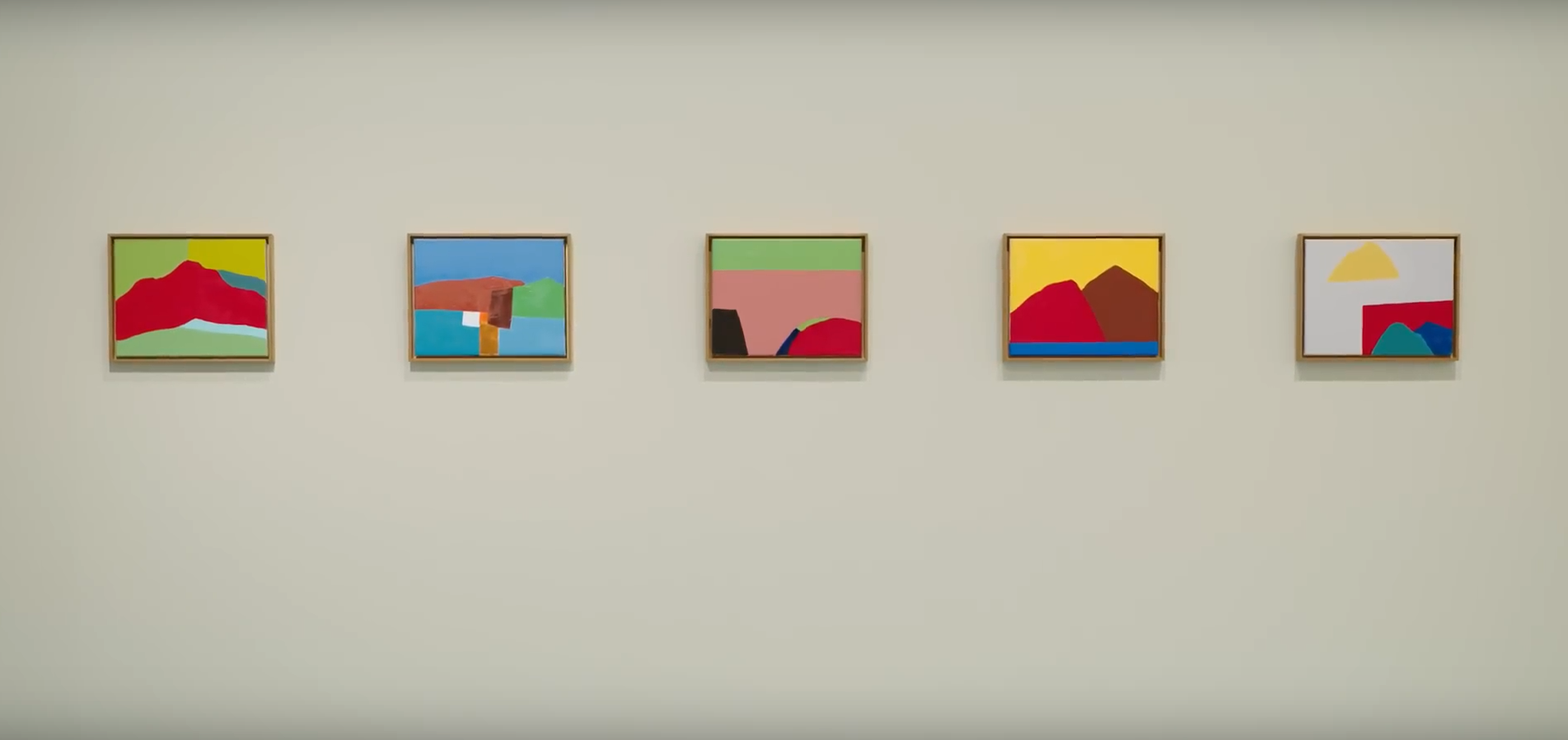Etel Adnan: Why Don’t We Speak of Beauty Anymore? (And Why She Never Stopped)
What does her lifelong dedication to beauty reveal about her work and the world she observed?

Etel Adnan, a Lebanese-American poet, essayist, and painter, occupies a distinctive place in the world of contemporary art and literature. Known for her abstract landscapes and powerful writing, Adnan’s work navigates themes of identity, exile, and political conflict. Her artistic and literary career, spanning decades and continents, is a testament to the power of art and literature to capture both personal and political realities. Through her exploration of displacement, Adnan forged a universal artistic language that transcends borders.
Although Etel Adnan first gained recognition as a writer, her paintings have garnered increasing attention in recent years. Born in Beirut in 1925 to a Greek mother and a Syrian father, Adnan’s multicultural upbringing profoundly influenced her artistic and political sensibilities. Her identity as a Lebanese-American immigrant provided a unique perspective on themes of exile and displacement—both geographic and cultural. These themes are at the heart of her paintings and literature, shaping her work as she navigated between Beirut, Paris, and California.
The Influence of Mount Tamalpais on Adnan’s Artistic Vision

Adnan’s abstract landscapes, particularly her depictions of Mount Tamalpais, reflect a deep connection to place, yet transcend the boundaries of geographic specificity. Her use of abstraction and bold color blocks creates a universal language of nature, one that resonates with viewers regardless of their cultural background. Her bicultural identity informs this abstraction, as she grapples with her sense of belonging across different landscapes. This is particularly visible in her work on Mount Tamalpais, which became a recurring subject in both her paintings and her poetry. In her essay Journey to Mount Tamalpais (1986), Adnan reflects on how the mountain represents stability amid the turbulence of her own displacement.
Adnan’s experiences of displacement also play a significant role in her literary works. In her seminal novel Sitt Marie Rose (1977), she delves into the complexities of identity, exile, and war during the Lebanese Civil War. The novel is a powerful critique of sectarianism and gender oppression, framed through the lens of her bicultural identity and the experience of living between worlds. Her poetry collections, such as Sea and Fog (2012), also explore themes of exile and displacement, with Adnan often reflecting on how these forces shape her sense of self and the landscapes she inhabits. By examining her personal journey of exile, Adnan creates a universal commentary on the human condition, grounded in her own experiences as an immigrant.
Exploring Displacement and Identity in Etel Adnan’s Works
For Adnan, the personal and the political are deeply intertwined. Her bicultural heritage informs her writing, as seen in Sitt Marie Rose, but it also permeates her visual work. The fluidity with which she moves between mediums speaks to her belief in the power of art to bridge cultural divides. In many ways, her abstract paintings are a form of “silent poetry,” as she once described them, where landscapes serve as metaphors for the complex realities of identity and displacement.
Her literary works, such as her essay collection Of Cities and Women (1993), further engage with issues of exile and migration, exploring how women in different cultures navigate identity and belonging. These writings, while often less celebrated than her paintings, offer critical insights into the immigrant experience, informed by her own cross-cultural background.
The Critical Reception of Etel Adnan's Exhibitions: A Selective Focus?
Adnan’s inclusion in dOCUMENTA (13) in 2012 marked a turning point in her visual art career, bringing her abstract landscapes to a broader international audience. This exhibition primarily focused on her paintings, particularly her depictions of Mount Tamalpais, which received widespread acclaim for their minimalist beauty. However, it’s worth asking whether this recognition fully engaged with the political and cultural complexities that underpinned her work. While her landscapes were celebrated for their universality, there was less attention paid to her literary contributions and the political dimensions of her art, which often dealt with themes of war, displacement, and exile.
Similarly, in her 2016 retrospective at the Serpentine Gallery in London, curators emphasized the abstract, universal nature of her landscapes but engaged less with the underlying political narratives that informed much of her work. While her visual art gained widespread attention, her writings—particularly her novel Sitt Marie Rose and her politically charged essays—were often sidelined in favor of her more commercially appealing paintings. The critical reception of her work at major exhibitions such as these highlights a broader tendency in the art world to selectively engage with certain aspects of an artist’s oeuvre, particularly when the artist comes from a non-Western or bicultural background.
Quotes from critics and curators provide insight into how Adnan’s work was framed in these exhibitions. As one curator at the Serpentine Gallery remarked, “Adnan’s work transcends borders, not just geographically, but in the way it blurs the distinctions between disciplines, between the personal and the political.” This perspective reinforces the idea that her work defies easy categorization, yet the selective focus on her visual art raises questions about whether the full scope of her contributions is being recognized.
Etel Adnan as a Multicultural Voice in Contemporary Art and Literature
Adnan’s selective recognition mirrors the experiences of other Middle Eastern and non-Western artists, such as Shirin Neshat and Mona Hatoum, who have faced challenges in gaining full recognition for their work. Like Adnan, these artists navigate complex cultural identities and often find that only certain aspects of their work, particularly the more marketable or less politically charged elements, are celebrated by Western institutions. This issue reflects a broader pattern in the global art world, where non-Western artists are selectively recognized based on how well their work aligns with Western commercial and aesthetic preferences.
As we reflect on Etel Adnan’s legacy, it’s important to consider how her work will continue to be recognized posthumously. While her abstract landscapes have garnered significant attention, there is a risk that the commercialization of her visual art could overshadow the politically charged nature of her literary contributions. Will her writings on war, displacement, and exile, arguably some of her most powerful works, receive the same recognition as her paintings?
Moreover, the question remains whether the global art world will fully embrace the complexity of Adnan’s identity as a Lebanese-American artist who defied categorization. Will her work be remembered in its entirety, or will only the more commercially viable aspects be celebrated? These questions challenge the art world’s ability to engage with the full scope of her contributions, especially those addressing difficult political realities.
ART Walkway News





